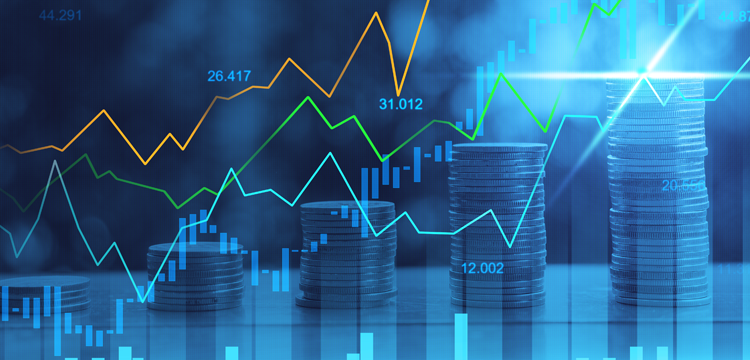EQUITIES
Shares in Asia-Pacific were higher in Thursday trade, with Hong Kong stocks leading gains regionally, with investors continue to monitor developments surrounding the COVID-19 situation in China as well as the ongoing Russia-Ukraine war.
The Hong Kong's Hang Seng surged 5.71% and erasing heavy losses from earlier in the week. The benchmark index saw its best day since October 2008 on Wednesday as it rocketed 9%. Meanwhile in the mainland, the stocks also rose, with the Shanghai composite up 2.60%.
Elsewhere, the Japan's Nikkei 225 soared 2.95% and touched a two-week high, while South Korea's KOSPI jumped 1.75% and Australia's benchmark S&P/ASX 200 added 1.05%.
Overnight on Wall Street, the Dow, S&P 500, and Nasdaq all closed higher after choppy trading following the Fed rate hike move. The gains were driven by stocks in the technology, financials, and consumer discretionary sectors. The Dow Jones Industrial Average rose 1.55% to 34,063.1, the S&P 500 gained 2.24% to 4,357.86 and the Nasdaq Composite added 3.77% to 13,436.55.
European stocks meanwhile closed at more than two-week highs as fresh talk of compromise in the Russia-Ukraine conflict boosted market sentiment.
OIL
Crude oil ticked higher on Thursday, recovering some of the prior day's losses, after the International Energy Agency said a decline in oil demand due to higher prices would not offset a shut-in of Russian oil supplies.
Market digested a report from the IEA that said some 3 million bpd of Russian oil output could be shut-in due to Western sanctions and as buyers snub Russian exports. That would exceed a 1 million bpd drop in demand anticipated as a result of higher prices.
In a statement Wednesday, EIA said the forecast is subject to heightened levels of uncertainty due to various factors, including Russia’s further invasion of Ukraine, government-issued limitations on energy imports from Russia, Russian petroleum production, and global crude oil demand.
Brent crude futures were up slightly to $99.45 a barrel, compared with a recent peak of $129.30. U.S. WTI crude was up to $96.49 a barrel, versus a top earlier this month of $124.58.
Both contracts had settled lower on Wednesday, following an unexpected jump in U.S. crude stockpiles and signs of progress in Russia-Ukraine peace talks. The oil inventories in the U.S. climbed by 4.3 million barrels in the week to March 11 to 415.9 million barrels, according to the U.S. EIA, surpassing analysts' expectations for a decline of 1.4 million barrels.
The Brent settled down 1.89% at $98.02 a barrel on Wednesday, while the U.S. crude had settled down 1.45% at $95.04 a barrel.
CURRENCIES
Treasury yields eased a little after spiking to nearly three-year highs overnight - with shorter-end yields rising more to flatten the curve - after the Fed raised the policy rate for the first time since 2018 and laid out an aggressive plan for further increases to combat inflation.
The benchmark 10-year U.S. Treasury yields reached 2.246%, the highest since May 2019, before retreating to 2.146% on Thursday. The two-year Treasury yield hit 2.002% after the Fed decision before easing to 1.9235%.
Australian and Japanese government bond yields also rose, tracking a jump in U.S. Treasury yields overnight.
The U.S. dollar meanwhile fell, as analysts saw it as within the bounds of market expectations and as oil were seen to be stabilizing. The U.S. dollar index fell 0.5% overnight and edged a further 0.2% lower to 98.388 in Thursday’s trading.
GOLD
Safe-haven gold rebounded after falling to more than a two-week low earlier in the session. Spot gold added 0.46% to $1,9236.10 an ounce, while U.S. gold futures rose 1.52% to $1,938.20 an ounce.
ECONOMIC OUTLOOK
Asian stocks jumped on Thursday, tracking the Wall Street performance, which closed sharply higher, after the U.S. Federal Reserve lifted interest rates heavily designed to counter inflation.
In a widely expected move, the U.S. Federal Reserve on Wednesday approved a 0.25 percentage point rate hike, the first increase since Dec. 2018. Officials at the U.S. central bank also signalled an aggressive path ahead, with rate rises coming at the six remaining meetings this year. The U.S. central bank also said it expects to begin unwinding its massive holdings of government bonds and mortgage-backed securities at an upcoming meeting.
China markets saw a very significant gains regionally after a Chinese state media report signalled support for Chinese stocks. Investors concerns about a sharp slowdown for China, which is battling a spreading COVID-19 outbreak with ultra-restrictive measures, were assuaged after Vice Premier Liu He signalled more stimulus to support markets. U.S.-listed Chinese stocks also soared following the report, which said regulators from both countries are working toward a cooperation plan on U.S.-listed Chinese stocks.
Elsewhere, talk of compromise from both Moscow and Kyiv on a status for Ukraine outside of NATO also has lifted hopes for negotiated end to fighting. Ukrainian President Volodymyr Zelenskiy said negotiations were becoming "more realistic" and Russia said proposals under discussion were "close to an agreement."














